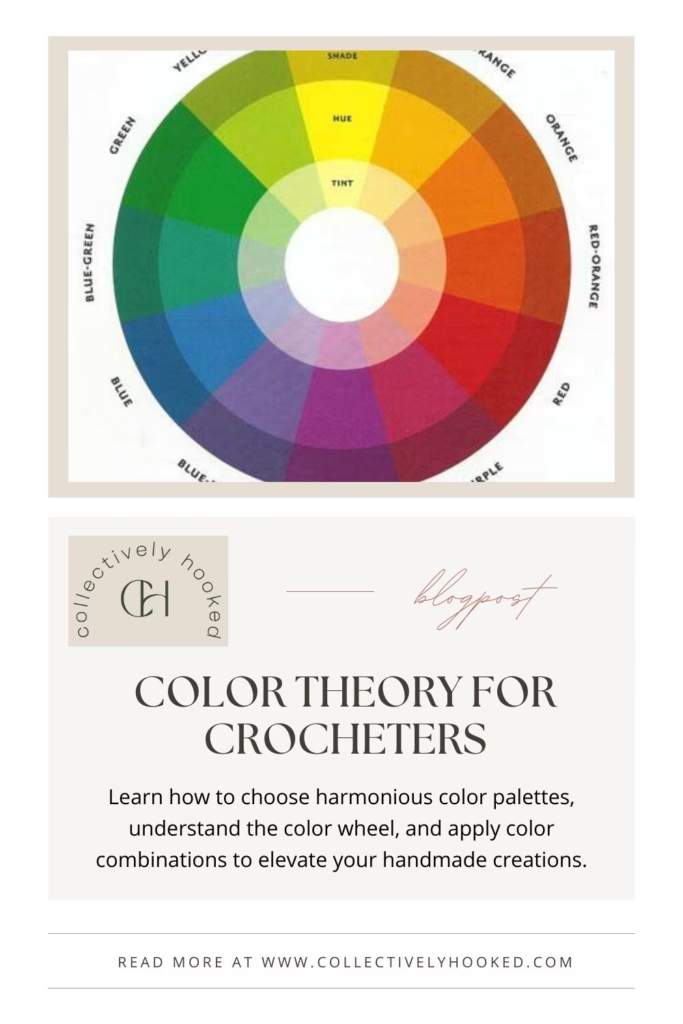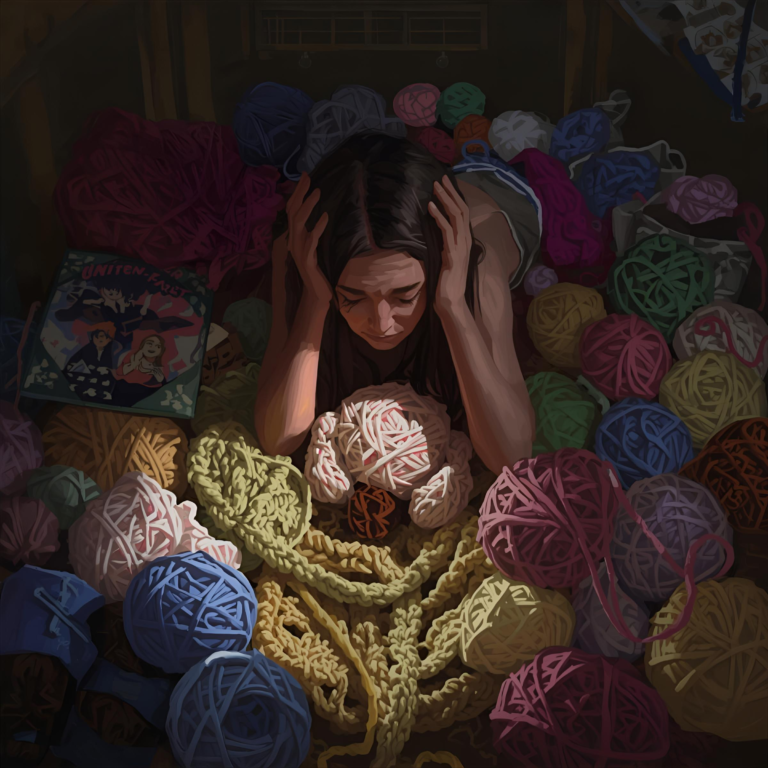Color Theory for Crocheters
I’m not going to pretend to know a ton about colors or color theory for crochet and other fiber arts. I stuck to the basics in school and played around with different color combinations despite having no other formal art training. What I can say is don’t let colors overwhelm you. There are lots of tools out there to assist you in choosing the best colors for your projects.
DISCLOSURE: This post contains affiliate links, meaning if you click on a product or service, and decide to purchase it, I may receive a commission at no extra cost to you. All recommended products and services are based on my experience with them. For more information, please read my Disclaimer.
What is Color Theory?
Color theory is a type of approach to understanding and using color. It’s often considered a systematic process. When choosing colors, consider how colors affect each other (blended together, next to other colors, etc) as well as how it can visually produce a desired reaction. Colors are often used to convey feelings and messages.
Color theory is a great tool to use to create visually appealing work. Check out this list on Goodreads about color theory for more inspiration and in depth reference.
Colors
We all learned our colors in school so this shouldn’t be too unfamiliar. Do you remember talking about primary, secondary, tertiary, cool, warm colors etc? Here’s a refresher:
Primary colors: Red, yellow, and blue (the foundation)
Secondary colors: Green, orange, and violet (created by mixing primary colors)
Tertiary colors: Blends of primary and secondary colors
Neutrals: White, black, gray, and browns
How the colors are mixed together or paired together can create beautiful images that convey messages and emotion to the viewer. Color wheels are great tools to use when considering multiple and/or varying colors for a project.
Check out this image and post from Shirley Williams. It has a great explanation of colors and the use of color theory.
Color Schemes
Made of a combination of two or more colors, color schemes are often used to create a desired style or appeal. Here are some color scheme ideas you can use when crafting:
- Add related colors: Use shades or tints of the main color, or incorporate colors from a chosen color scheme.
- Consider neutrals: Use neutrals to anchor the project and make other colors pop.
- Complementary: Colors opposite each other on the color wheel, offering high contrast (e.g., red and green).
Using Color Theory in Crochet
- Consider who the item is for: favorite colors, matching closer to nature? etc.
- Choose a main color: Start with a specific color and build a palette around it.
- Consider the item’s purpose: Calm colors for a bedroom, bright colors for a kitchen etc.
RELATED: Ultimate guide to crochet techniques
Additional Tips and Tools
- Physical color palate books
- Online tools: Design Seeds and other websites can help you explore color palettes.
- Experiment and have fun: Don't be afraid to try different combinations and find what works best for you.
- Look for inspiration: Crystals & Crochet offers ideas for color combinations.
- Don't be afraid to switch colors: Color changes can be a fun way to add visual interest and texture to your work.
Summary
Crochet is already a beautiful and sometimes intricate craft. When you explore colors along with textures and shapes, the possibilities for creation are endless and can be incredibly inspiring.
I personally bought a book of color palettes to reference when I get caught up with color decisions. Remember that there are lots of resources that are available at your fingertips if you need help. Finally, figure out what works best for you and watch your projects take on new life!
RELATED: Beginner Written Crochet Pattern Walk-Through








I’m a beginner crocheter, so I usually grab whatever yarn is on clearance. Your explanation of colors and how to balance them is going to help me immensely! Now my yarn stash is going to look like matchable colors instead of clearance shelf chaos.
I’m guilty of the same!! Once I started paying attention to colors too and not just price, I actually want to use MORE of the yarn I have now!
I am new to learning about color theory so this was very helpful!
Happy to help!
This is such a helpful post! I’ve always wanted to understand how to make my color choices pop in crochet. I’m a newbie, and this breakdown of color theory is exactly what I needed.
It really came together for me when I saw color pallet examples. Then it was like an aha moment! Be sure to check out color pallets on Pinterest too!
I really appreciate how down-to-earth this post is! It’s easy to get intimidated by color theory, but your approach makes it feel so much more doable. I love the reminder not to overthink it and to just have fun experimenting. Definitely feeling inspired to be a bit bolder with my next project!
Wonderful, I’m glad I could help! And honestly… if you don’t like the colors, just frog it and call it a day if you’re not that far along into the project. There’s always tomorrow!
Thanks so much for this. It’s amazing how going back to the basics can be so inspiring. I know exactly what colours I am going to use for the next projext I am about to start.
Yes, going back to the basics is something I do regularly!
Thats great to know, I didn’t know about color theory. It takes you back to the basics. Thanks for sharing!
It’s definitely something I didn’t think about at first until I started doing more intricate and complicated projects. I’m happy it helped!
This is super helpful! It can be difficult to know what colors go together. Thanks for this!
Happy to help!
I didn’t know the color theory for crocheting, thank you!
There’s a lot of information out there about color theory, but even just doing a search on color palette examples can be inspiring and helpful too!
Love this idea! Understanding color theory can totally elevate crochet projects, from choosing the perfect yarn combos to creating eye-catching patterns.